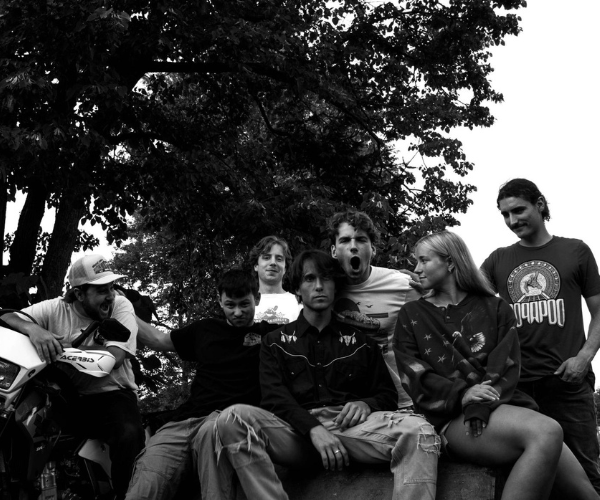Sunday, Dec. 7, 1941, started out just like any other day. “People got up in the morning and went about their business,” says Ed Pershey, vice president for museums and historic properties at the Western Reserve Historical Society. “But by Monday morning, their entire world had changed, and everyone was forced to put their lives on hold for the next four years.”
Through the exhibit WWII: Up Front and Personal, the Western Reserve Historical Society explores just how deeply, thoroughly and intimately the “good war” affected the people of Northeast Ohio. Because Cleveland was the sixth-largest city in the United States at the start of the war and an industrial powerhouse, the community was particularly involved in wartime efforts. From enlisted men and their spouses to elementary school teachers and their pupils, the war touched everyone.
“This is not a comprehensive flag-waving history of World War II,” explains Pershey. “This is an exhibit of personal stories from Cleveland-area people who experienced World War II firsthand.”
When a small item in The Plain Dealer mentioned that the Western Reserve Historical Society was looking for folks to share their personal wartime experiences, both home and abroad, the response was immediate and amazing. “The phone rang off the wall with people dying to tell their stories,” says Pershey.
Those stories, collected through numerous interviews and presented at the exhibit via oral-history stations, distill the war to a personal level. Visitors will hear the emotional narrative of a Jewish woman, now living in Cleveland, who at age 12 was forced to leave her parents in Czechoslovakia when she was evacuated via the Kindertransport program. Visitors will meet, through sound and stills, one of Cleveland’s Rosie the Riveters, who helped assemble B-29 bombers at what is now the I-X Center. A soldier’s home movie, shot on grainy 8mm film and squirreled away for decades, offers a tiny glimpse of life on the other side of the world.
Other themes explored through personal narratives include war brides and their wartime romances, the campaign in the Pacific, and how the war affected the city’s youth.
The Schools at War exhibit takes a fascinating look at what school-age children did to support the war effort at home. Scrapbooks, filled out by teachers and students from Hough Elementary and Myron T. Herrick Junior High, document the student-led sale of war stamps, the collection of tin and unwanted keys, and the organization of scrap-metal drives.
“These were tough times for children on the home front,” explains Janice Ziegler, Western Reserve Historical Society’s vice president of education and public programs. “There were fewer supplies in the grocery stores; parents couldn’t buy new appliances, shoes or sugar. These school programs helped because they made children feel like they were doing something to help.”
The 2,000-square-foot exhibit, which is presented in collaboration with WVIZ/ PBS ideastream and 90.3 WCPN, starts in a “ready room,” where visitors learn such basics as who we were fighting, who our allies were and where the battles took place. Artifacts on loan from families, such as a hand-signed flag given to a kindly guard by appreciative Japanese POWs, will also be on display.
But Pershey stresses that this is not an exhibit of things: It is an exhibit about people and the sacrifices they made. “It is,” he says, “a time to remember.”
Through the exhibit WWII: Up Front and Personal, the Western Reserve Historical Society explores just how deeply, thoroughly and intimately the “good war” affected the people of Northeast Ohio. Because Cleveland was the sixth-largest city in the United States at the start of the war and an industrial powerhouse, the community was particularly involved in wartime efforts. From enlisted men and their spouses to elementary school teachers and their pupils, the war touched everyone.
“This is not a comprehensive flag-waving history of World War II,” explains Pershey. “This is an exhibit of personal stories from Cleveland-area people who experienced World War II firsthand.”
When a small item in The Plain Dealer mentioned that the Western Reserve Historical Society was looking for folks to share their personal wartime experiences, both home and abroad, the response was immediate and amazing. “The phone rang off the wall with people dying to tell their stories,” says Pershey.
Those stories, collected through numerous interviews and presented at the exhibit via oral-history stations, distill the war to a personal level. Visitors will hear the emotional narrative of a Jewish woman, now living in Cleveland, who at age 12 was forced to leave her parents in Czechoslovakia when she was evacuated via the Kindertransport program. Visitors will meet, through sound and stills, one of Cleveland’s Rosie the Riveters, who helped assemble B-29 bombers at what is now the I-X Center. A soldier’s home movie, shot on grainy 8mm film and squirreled away for decades, offers a tiny glimpse of life on the other side of the world.
Other themes explored through personal narratives include war brides and their wartime romances, the campaign in the Pacific, and how the war affected the city’s youth.
The Schools at War exhibit takes a fascinating look at what school-age children did to support the war effort at home. Scrapbooks, filled out by teachers and students from Hough Elementary and Myron T. Herrick Junior High, document the student-led sale of war stamps, the collection of tin and unwanted keys, and the organization of scrap-metal drives.
“These were tough times for children on the home front,” explains Janice Ziegler, Western Reserve Historical Society’s vice president of education and public programs. “There were fewer supplies in the grocery stores; parents couldn’t buy new appliances, shoes or sugar. These school programs helped because they made children feel like they were doing something to help.”
The 2,000-square-foot exhibit, which is presented in collaboration with WVIZ/ PBS ideastream and 90.3 WCPN, starts in a “ready room,” where visitors learn such basics as who we were fighting, who our allies were and where the battles took place. Artifacts on loan from families, such as a hand-signed flag given to a kindly guard by appreciative Japanese POWs, will also be on display.
But Pershey stresses that this is not an exhibit of things: It is an exhibit about people and the sacrifices they made. “It is,” he says, “a time to remember.”
WWII: Up Front and Personal is on display at the Western Reserve Historical Society through April 15. For more information, call (216) 721-5722 or visit www.wrhs.org.



